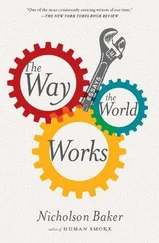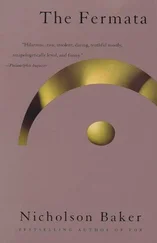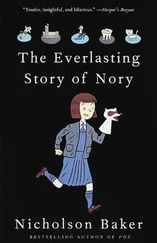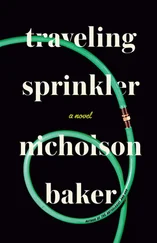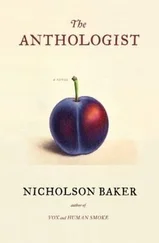2. “stock control”: See, for example, J. A. Urquhart and N. C. Urquhart, Relegation and Stock Control in Libraries (Stocksfield, Northumberland: Oriel Press, 1976), which discusses something called a “weedability factor,” defined as “the number of uses per working day per metre of shelving occupied.” Circulation statistics are all-important: “Intuitively, books which were last borrowed a long time ago seem ripe for relegation, books which were recently borrowed are left alone.”
3. “kissing through a pane of glass”: Quoted in Stephen R. Salmon, “User Resistance to Microforms in the Research Library,” Microform Review 3:3 (July 1974).
4. leave the bindings alone: “Poor binding also presents its own problems and although our cameras do cope well with tight binding we have unbound some volumes to allow filming to proceed.” John E. Lauder, “The Scottish Newspapers Microfilming Unit,” Microform Review 24:2 (spring 1995).
5. Historical Records Survey: Clifton Dale Foster, “Microfilming Activities of the Historical Records Survey, 1935–42,” American Archivist 48:1 (winter 1985). Foster writes that “the text of many filmed documents is almost illegible. One general complaint of those repositories housing copies of Historical Records Survey microfilm was that the film images are unreadable.” Luther Evans was a disciple of Robert C. Binkley, whose Manual on Methods of Reproducing Research Materials (Ann Arbor: Edwards Brothers, 1931) influenced many. Binkley, who believed in microfilming newspapers and “letting the originals disappear” ( Manual on Methods, p. 106), took an interest in the Historical Records Survey and “worked closely with Luther Evans in an advisory capacity and as a part-time field director in Ohio,” writes Foster. “During the first few months of the Survey’s existence, [Binkley] frequently urged Luther Evans to broaden the project’s scope to include microfilming. Evans, although hesitant at first, was eventually convinced and implemented many of Binkley’s suggestions.” The Historical Records Survey supplied the camera and the labor; the owning institution paid for the negatives: Luther Evans, “Recent Microfilming Activities of the Historical Records Survey,” Journal of Documentary Reproduction 2:1 (March 1939).
6. “The entire back of the binding”: Luther Evans, “Reference Department,” in Library of Congress, Annual Report of the Librarian of Congress for the Fiscal Year Ended June 30, 1941 (Washington, D.C.: U.S. Government Printing Office, 1942), p. 133. Charles Case, at Recordak, led the way. “A rotary machine for photographing separate sheets is considerably more rapid than a machine for handling bound volumes. One machine can therefore turn out more work and so go further in its job of preserving evanescent material and saving valuable space than one machine of the other type….The rotary machine can also be used for back files if they are cut out of the binding. This is the way we have photographed the 1914–1918 New York Times ” (Case, “Photographing Newspapers,” p. 57).
7. “This was a major decision”: S. Branson Marley, Jr., “Newspapers and the Library of Congress,” Library of Congress Quarterly Journal 32:3 (July 1975), reprinted in Veaner, Studies in Micropublishing, p. 425.
8. over a hundred and fifty dollars per volume: A price sheet distributed in 1998 by the Northeast Document Conservation Center, “Microfilm Department Hourly Standards and Price Per Frame,” lists a price of twenty-three cents per frame for “good newspapers”; the cost is forty cents per frame for “poor newspapers.” A typical volume — containing two weeks of a major newspaper from the first half of the twentieth century, say — might have two 150-page Sunday issues and thirteen thirty-page issues, or about 690 pages; that is, filming it would cost over $150 if the filmer classes it as good.
9. less than five dollars a volume: According to an Ohio State report, it cost $2.76 per volume to construct Berkeley’s Northern Regional Library Facility; $3.36 per volume to build the Sixth Stack Addition at the University of Illinois; $1.30 per volume (including land and financing) to build the Harvard Depository. Ohio Board of Regents, Academic Libraries in Ohio: Progress through Collaboration, Storage, and Technology, Report of the Library Study Committee, September 1987, appendix E.
10. “condensing records”: Case, “Photographing Newspapers,” p. 53.
11. wall of volumes of The New York Times: Reproduced as plate 1 in Fussler, Photographic Reproduction for Libraries. The caption is “Twelve Years of the New York Times in Original and on Film.” In those early years, Charles Puckette, the business manager of The New York Times, was less enthusiastic about replacing paper with film: “We recognize the need of the libraries to conserve space and when one is looking about for ways in which to save space, the large newspaper files naturally attract attention. But we are printers. We deal in the printed page just as librarians are primarily the custodians of the printed page. We think that the actual paper and ink as they appear in the form of the daily printed paper have inherent values in them which cannot be transmitted by film alone and which suffer, too, in reduction. An essential part of the record of today which you will preserve for the future will be the development of newspaper printing. And that part of the history of our times only the actual printed page will show.” C. McD. Puckette, “Question of Filming the New York Times,” in Raney, Microphotography for Libraries, p. 61.
12. who bought two microfilm readers: See Keyes Metcalf, Random Recollections of an Anachronism (New York: Readex Books, 1980), pp. 276–77. In 1935, “a film reproduction of the New York Herald Tribune replaced the Japanese-tissued bound file and since that time has been the only back file for the period available to readers,” Metcalf proudly wrote at the time. Keyes Metcalf, “Microphotography in the New York Public Library,” in Raney, Microphotography for Libraries, p. 85. (Semi-transparent Japanese tissue, applied with paste and pressed through a heated mangle, reinforced the pages.) See also Metcalf’s “Newspapers and Microphotography,” The Journal of Documentary Reproduction 2:3 (September 1939), which grants that the foreign-newspaper film that he is producing at Harvard “costs much more than the original,” but when you take into account the cost of binding and storage things begin to even out.
13. “to help push microphotography”: Quoted in David C. Weber, “The Foreign Newspaper Microfilm Project, 1938–1955,” Harvard Library Bulletin (spring 1956), reprinted in Veaner, Studies in Micropublishing.
14. sprocket perforations: Thomas A. Bourke, “The Curse of Acetate; or, a Base Conundrum Confronted,” Microform Review 23:1 (winter 1994); and Thomas A. Bourke, “Scholarly Micropublishing, Preservation Microfilming, and the National Preservation Effort in the Last Two Decades of the Twentieth Century: History and Prognosis,” Microform Review 19:1 (winter 1990).
15. siege of Paris: See Ralph de Sola, Microfilming (New York: Essential Books, 1944), pp. 22–25.
16. Eugene Power: See Jack Rubin, A History of Micrographics in the First Person (Silver Spring, Md.: National Micrographics Association, 1980), pp. 69–70. In the OSS project, Power had help from Frederick Kilgour, who went on to glory as the founder of OCLC, the bibliographic database. See “Eugene Barnum Power” and “Frederick Gridley Kilgour” in American Society of Information Scientists (ASIS), Pioneers of Information Science in North America, www.asis.org/Features/Pioneers/isp.htm.
Читать дальше



